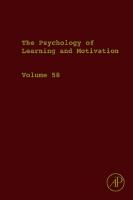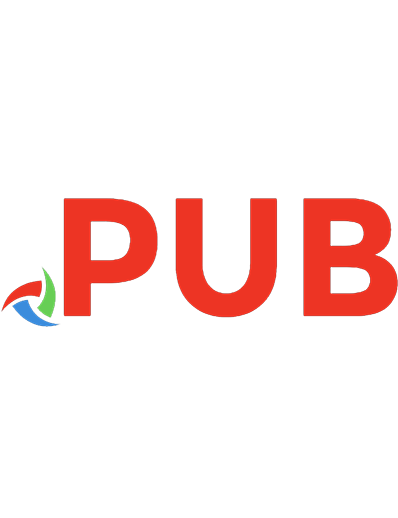The Psychology of Music [Third Edition] 9780123814609, 1865843830, 012381460X
The Psychology of Music serves as an introduction to an interdisciplinary field in psychology, which focuses on the inte
915 221 2MB
English Pages 765 [766] Year 2012
Table of contents :
01.pdf......Page 1
The Psychology of Music......Page 2
Copyright page......Page 3
List of Contributors......Page 4
Preface......Page 6
B Measuring Perception......Page 11
1 Dynamic Range and the Decibel......Page 14
2 Equal Loudness Contours and the Loudness Weighting Curves......Page 15
3 Loudness Scales......Page 16
4 Partial Loudness and Context Effects......Page 17
5 Models of Loudness......Page 18
1 Pitch of Pure Tones......Page 19
2 Pitch of Complex Tones......Page 22
D Sensory Interactions and Cross-Modal Influences......Page 28
2 Effects of Pitch or Timbre Changes on the Accuracy of Loudness Judgments......Page 29
A Object Perception and Grouping......Page 30
1 Roughness......Page 31
D Consonance and Dissonance......Page 33
References......Page 35
2 Musical Timbre Perception......Page 44
A Timbre Space......Page 45
B Audio Descriptors of Timbral Dimensions......Page 50
C Interaction of Timbre with Pitch and Dynamics......Page 54
II Timbre as a Vehicle for Source Identity......Page 55
III Timbre as a Structuring Force in Music Perception......Page 57
A Timbral Blend......Page 58
B Timbre and Musical Grouping......Page 59
C Timbral Intervals......Page 61
D Building and Releasing Musical Tension with Timbre......Page 64
E Implicit Learning of Timbre-Based Grammars......Page 66
IV Concluding Remarks......Page 68
References......Page 71
II Voice Function......Page 77
III Phonation......Page 79
A Loudness, Pitch, and Phonation Type......Page 80
B Register......Page 83
A Formant Frequencies at High Pitches......Page 85
B The Singer’s Formant Cluster......Page 87
D Voice Classification......Page 90
V Intensity and Masking......Page 92
B Text Intelligibility......Page 94
C Larynx Height......Page 96
E Naturalness......Page 97
A Physical Characteristics......Page 98
1 Vowel Intelligibility......Page 99
2 Singleness in Pitch......Page 100
3 Pitch and Mean F0......Page 102
VIII Intonation in Practice......Page 104
IX Expression......Page 106
X Concluding Remarks......Page 107
References......Page 108
I Introduction......Page 114
A Simultaneous Intervals......Page 115
B Sequential Intervals......Page 123
C Limits and Precision of Relative Pitch......Page 130
III Scales and Tuning Systems......Page 134
IV Overview......Page 138
References......Page 139
I Introduction......Page 148
A The Tritone Paradox......Page 149
B Pitch Identification and Production......Page 150
B The Genetic Hypothesis......Page 152
C The Critical Period Hypothesis......Page 155
D Influence of Type of Musical Training......Page 156
B Critical Periods for AP and Speech......Page 157
C Neuroanatomical Evidence......Page 158
D AP and Tone Language......Page 159
A Categorical Perception of Pitch......Page 164
B Pitch Memory......Page 165
D Processing of Relative Pitch......Page 166
VI Neuroanatomical Substrates of AP......Page 170
A Pitch Class......Page 172
C Timbre......Page 175
A Association with Advancing Age......Page 176
IX AP in Special Populations......Page 177
X Conclusion......Page 179
References......Page 180
I Introduction......Page 190
II Fusion and Separation of Spectral Components......Page 192
A Effects of Harmonicity......Page 193
B Effects of Onset Synchronicity......Page 194
C Auditory Continuity......Page 196
D Effects of Vibrato......Page 200
F Effects of Spatial Separation......Page 201
III Larger-Scale Groupings......Page 202
A Streaming by Pitch Proximity......Page 203
B Streaming by Timbre......Page 207
C Building and Resetting of Auditory Streams......Page 208
D Streaming and Perception of Temporal Relationships......Page 210
E Streaming by Amplitude and Amplitude Modulation......Page 211
G Streaming and Attention......Page 212
H Brain Mechanisms Underlying Streaming......Page 213
V Grouping and Phrase Structure......Page 215
VI Grouping of Simultaneous Tone Sequences......Page 219
A The Scale Illusion and Related Phenomena......Page 221
B The Octave Illusion......Page 231
C Illusory Conjunctions and Attention......Page 236
A Grouping by Pitch Proximity......Page 238
B Grouping by Common Fate......Page 243
VIII Relationships to Music Theory and Practice......Page 244
References......Page 245
A Octave Equivalence......Page 256
B Perceptual Equivalence of Intervals and Chords......Page 257
C Interval Class......Page 260
D Contour......Page 263
E Pitch Organization in Melody......Page 265
III Abstraction of Higher-Order Shapes......Page 268
A Transposition......Page 269
B Inversion and Retrogression......Page 271
C Models of Pitch Space......Page 273
D The Deutsch/Feroe Model......Page 277
E Acquisition of a Representation......Page 284
F Other Approaches to Key Identification......Page 287
IV The Organization of Short-Term Memory for Tones......Page 290
A The System That Retains Absolute Pitch Values......Page 291
B Further Evidence for a Separate Pitch Memory System......Page 293
C Specific Interactions within the Pitch Memory System......Page 295
D Item and Order Information......Page 298
F Octave Generalization......Page 299
G Pitch Proximity and Pitch Memory......Page 300
I Memory for Loudness......Page 302
K Memory for Duration......Page 303
L Memory for Pitch Relationships......Page 304
V Paradoxes Based on Pitch Class......Page 305
A The Tritone Paradox......Page 307
B The Semitone Paradox......Page 310
C The Melodic Paradox......Page 311
D Implications of These Musical Paradoxes......Page 313
E Basis of the Tritone Paradox......Page 315
VI Illusory Transformation from Speech to Song......Page 319
References......Page 320
I Introduction......Page 333
II Models of Key-Finding......Page 335
III Models of Meter-Finding......Page 339
IV Other Aspects of Perception......Page 346
A Pitch Identification......Page 347
B Grouping and Voice Separation......Page 348
C Harmonic Analysis and Pitch Spelling......Page 349
D Pattern Discovery......Page 352
E Pitch Reduction......Page 353
V Models of Musical Experience......Page 354
VI Models of Performance......Page 358
VII Models of Composition......Page 362
VIII Conclusions......Page 365
References......Page 367
I Introduction......Page 375
II Overview: Decomposing the Rhythmic Signal......Page 377
III Structure and Interpretation: Visualizing Rhythm Space......Page 378
IV Rhythmic Pattern: Representation......Page 380
V Rhythmic Pattern and Timing: Categorization......Page 381
A Syncopation......Page 386
B Beat Induction as a Fundamental Cognitive Skill......Page 387
VII Tempo and Timing: Perceptual Invariance......Page 389
VIII Rhythm and Movement: Embodied Cognition......Page 390
References......Page 391
Bibliography......Page 396
I Introduction......Page 411
II Movement in Performance......Page 412
A Movement as Sensory Information......Page 413
B Movement as Expressive Gesture......Page 415
A Sensory Feedback in Ensembles......Page 418
B Individual Differences and Musical Roles in Ensembles......Page 422
IV Summary......Page 424
References......Page 425
I Origins of Music......Page 429
A Singing to Infants......Page 431
B Entrainment and Making Music Together......Page 438
C Conclusions......Page 440
A Spectral Processing......Page 441
a. Integrating Harmonics into a Percept of Pitch......Page 443
b. Sensory Consonance and Dissonance......Page 444
c. Relative Pitch......Page 445
2 Later Developing Pitch Abilities: Enculturation to Western Tonality......Page 447
B Temporal Processing......Page 449
C Development of Emotional Responses to Music......Page 451
IV Music Production: Development of Singing......Page 452
A From Cooing to Song......Page 453
B Pitch Accuracy and Singing in Key......Page 454
C Learning to Sing as a Sensorimotor Task......Page 456
A Differences between Adult Musicians and Nonmusicians......Page 457
B Does Music Training Cause Enhanced Processing in Adults?......Page 459
C Effects of Formal Music Training on Musical Development......Page 461
VI Interactions between Music Experience and Nonmusical Abilities......Page 465
A Music and Mathematics......Page 466
B Music and Spatial Abilities......Page 467
C Music and Language......Page 468
1 Influence of Music Experience on Language Abilities......Page 469
2 Influence of Language Experience on Musical Abilities......Page 472
3 Music and Reading......Page 474
D Music and General Cognitive Abilities......Page 476
VII General Conclusions......Page 479
References......Page 480
II Music Aptitude and Cognitive Abilities......Page 504
A Music Aptitude and Language......Page 506
B Music Aptitude and Mathematics......Page 508
C Music Aptitude and General Cognitive Abilities......Page 509
III Cognitive Abilities after Listening to Music......Page 510
A The Mozart Effect......Page 511
B Meta-analyses......Page 512
C Arousal and Mood......Page 513
IV Background Music and Cognitive Abilities......Page 516
A Emotional Responses and Cognitive Capacity......Page 517
C Background Music and Memory......Page 519
D Background Music and Reading Comprehension......Page 521
E Background Music and Individual Differences......Page 522
F Background Music: Conclusions......Page 523
A Music Training and Listening......Page 524
B Music Training and Memory......Page 526
C Music Training, Vocabulary, and Reading......Page 527
D Music Training and Visuospatial Abilities......Page 529
E Music Training and Mathematics......Page 531
F Music Training and General Intelligence......Page 532
G Music Training and Academic Achievement......Page 534
H Music Training, Social-Emotional Abilities, and Executive Functions......Page 536
VI Conclusions......Page 538
References......Page 539
13 The Biological Foundations of Music: Insights from Congenital Amusia......Page 556
A Diagnosis of Congenital Amusia......Page 557
1 Music Specificity......Page 559
II Pitch Is Special......Page 560
III Right Frontotemporal Connectivity Is Key......Page 562
V Limited Plasticity......Page 564
References......Page 566
II Behavioral Studies: The Effects of Musical Training on Cognitive Performance......Page 570
III Imaging Studies: The Effects of Musical Training on Brain Organization......Page 572
V Music-based Treatments to Modulate Brain Plasticity: Melodic Intonation Therapy and Auditory-Motor Mapping Training......Page 575
A Melodic Intonation Therapy......Page 576
B Auditory-Motor Mapping Training......Page 578
VI Concluding Remarks......Page 579
References......Page 580
15 Music and Emotion......Page 587
I History......Page 588
II Emotion Theory......Page 591
A Does Music Express Emotions?......Page 593
B Which Emotions Does Music Express?......Page 594
C How Does Music Express Emotions?......Page 597
1 Causal Factors......Page 599
2 Mechanisms......Page 602
A Does Music Arouse Emotions?......Page 606
B Which Emotions Does Music Arouse?......Page 609
b Situational Factors......Page 614
c Musical Factors......Page 615
2 Mechanisms......Page 616
V Themes in Current Research......Page 624
1 Prebirth......Page 625
2 Preverbal Infancy......Page 626
3 Preschool Childhood......Page 627
4 Preadolescent Childhood......Page 628
B Neuropsychology......Page 629
2 Perception of Emotion......Page 630
3 Arousal of Emotion......Page 631
4 Theory and Mechanism......Page 632
VI Implications and Outlook......Page 633
References......Page 636
I Introduction......Page 650
A Introduction......Page 651
B Abilities That are Widespread among Other Species......Page 653
C Abilities Restricted to Humans and Select Other Species......Page 655
D Abilities That Are Uniquely Human......Page 657
A Introduction......Page 660
B Infant Research......Page 663
C Perception of Emotion......Page 666
D Perception of Musical Structure......Page 669
E Culture and Musical Memory......Page 671
F Cognitive Neuroscience Approaches......Page 672
G Cross-Cultural Studies: Conclusion and Considerations for Future Research......Page 675
References......Page 676
17 Psychologists and Musicians: Then and Now......Page 685
I Helmholtz and Basevi in the 1860s......Page 686
II Seashore and Kurth in the 1920s......Page 691
III Francès and Meyer in the 1950s......Page 695
A Establishing a Foothold in the Academy......Page 699
B Disruptive Technologies......Page 702
C Outmoded, Narrow Theories......Page 703
V A Continuing Challenge......Page 704
References......Page 707
Author Index......Page 710
Subject Index......Page 748
![The Psychology of Music [Third Edition]
9780123814609, 1865843830, 012381460X](https://dokumen.pub/img/200x200/the-psychology-of-music-third-edition-9780123814609-1865843830-012381460x.jpg)


![Idiot's Guides: Music Theory, Third Edition [Book] [Third Edition]
9781465454102, 9781465451675](https://dokumen.pub/img/200x200/idiots-guides-music-theory-third-edition-book-third-edition-9781465454102-9781465451675.jpg)
![Idiot's Guides: Music Theory, Third Edition [Audio] [Third Edition]
9781465454102, 9781465451675](https://dokumen.pub/img/200x200/idiots-guides-music-theory-third-edition-audio-third-edition-9781465454102-9781465451675.jpg)
![Child Psychology and Psychiatry [Third edition]
9781119170228, 1119170222, 9781119170235, 1119170230](https://dokumen.pub/img/200x200/child-psychology-and-psychiatry-third-edition-9781119170228-1119170222-9781119170235-1119170230.jpg)
![Music in childhood: from preschool through the elementary grades [Third edition, enhanced edition]
9780495572138, 0495572136](https://dokumen.pub/img/200x200/music-in-childhood-from-preschool-through-the-elementary-grades-third-edition-enhanced-edition-9780495572138-0495572136.jpg)
![Land of the Midnight Sun, Third Edition: A History of the Yukon [Third edition]
9780773552135](https://dokumen.pub/img/200x200/land-of-the-midnight-sun-third-edition-a-history-of-the-yukon-third-edition-9780773552135.jpg)

![The Physiotherapist’s Pocketbook Essential facts at your fingertips THIRD EDITION [THIRD EDITION, THIRD EDITION]
9780702055065, 9780702077982](https://dokumen.pub/img/200x200/the-physiotherapists-pocketbook-essential-facts-at-your-fingertips-third-edition-third-edition-third-edition-9780702055065-9780702077982.jpg)
